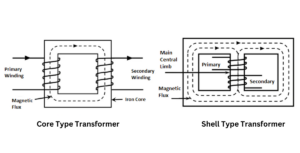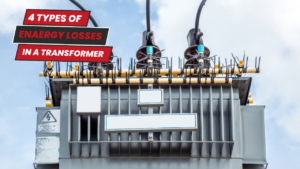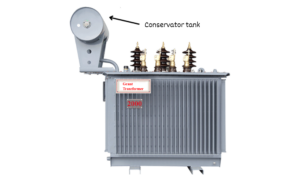Earth faults are evasive yet potent phenomena that play an integral role in the arena of electrical systems. To comprehend the complexities of an earth fault, we must undertake a journey through the layers of electrical engineering, exploring the science behind these occurrences, their implications, and the measures employed to mitigate their impact.
What is Earth Fault?
At its core, an earth fault (also known as a ground fault/ leakage fault/ insulation current) refers to an unintended connection between an electrical conductor and the earth (ground). This connection can result from insulation breakdown, equipment failure, or external factors like lightning strikes. The consequences of an earth fault can be far-reaching, ranging from equipment damage to severe safety hazards. It is always recommended to elevate your energy infrastructure with the most advanced transformer solutions.
In the Australian landscape, Earth faults within electrical systems emerge as a substantial threat to both safety and economic stability. The potential consequences, ranging from electrical fires and equipment degradation to costly downtime, underscore the imperative for heightened awareness and robust preventive measures.
How does an Earth Fault occur?
Understanding the root causes of earth faults is essential for effective prevention. This connection typically arises due to insulation breakdown, equipment malfunction, or external factors such as environmental conditions or lightning strikes. When such a fault occurs, it provides a low-resistance path for the fault current to flow directly into the ground. In industrial settings, human error and inadequate maintenance also contribute to the prevalence of earth faults.
In the context of an electrical installation, this fault current can lead to a disruption in the normal flow of electricity, potentially causing damage to equipment and posing safety risks. Short-circuit currents may arise, creating a surge in electrical flow beyond the intended capacity of the system. Transformers within the installation can play a pivotal role in amplifying or mitigating the impact of an Earth Fault, depending on their design and protective measures in place.
The following points examine the underlying reasons and currents that give rise to Earth Faults:
- Ground Fault Current: Occurring when electrical current unintentionally flows to the ground or a conductive surface through an unintended pathway.
- Circuit Earth Fault: Faults may manifest within the electrical circuit itself, posing a potential risk of Earth Faults.
- Restricted Fault Current: In certain situations, fault currents are confined or limited, yet they can still lead to the occurrence of an Earth Fault.
- Fault Presence: Earth Faults may arise in the presence of a fault within the electrical system, even if its manifestation is not immediately evident.
Detection Methods:
Detecting earth faults promptly is imperative to prevent catastrophic consequences. Various methods are employed, each tailored to specific scenarios. Ground fault circuit interrupters (GFCIs) are commonly used in residential settings, while advanced protection relays and insulation monitoring devices find application in industrial and commercial setups. The integration of these technologies ensures a complete approach to earth fault detection.
What are the effects and Consequences of an Earth Fault?
The repercussions of an earth fault extend beyond immediate damage to electrical systems. Fire hazards, electrical shocks, and disruptions to critical operations are among the potential consequences. Additionally, the economic impact of downtime and repair costs underscores the importance of proactive measures against earth faults.
The financial ramifications are evident in the millions of dollars spent annually on equipment damage, downtime, and repairs, as well as the prevalence of insurance claims. Moreover, earth faults stand as a primary catalyst for electrical fires in Australia, posing imminent threats to life and property while straining emergency response resources.
Industrial sectors, heavily reliant on sensitive electronic equipment, grapple with significant disruptions, leading to production halts and supply chain complications. The unique geological characteristics of Australia, coupled with its diverse climate, further complicate fault management. Geological factors, including specific minerals and soil types, can impact the efficacy of grounding systems, exacerbating the risk of earth faults.
As climate variability introduces challenges such as temperature extremes and corrosive coastal effects, wear and tear on electrical infrastructure intensify, amplifying the likelihood of faults. Amid these complexities, safety concerns take centre stage. Ensure the resilience of your electrical infrastructure by implementing proactive safety measures. Prioritise safety and partner with Grant Transformers for a secure, reliable energy future.
Are Earth Faults really dangerous?
When an Earth Fault occurs, it creates an unintended pathway for fault current to flow into the ground, disrupting the normal operation of electrical installations. The magnitude of fault current generated during such conditions can be substantial, posing serious risks to both equipment and personnel. The significance of Earth Faults lies in their potential to cause electrical shocks, fires, and equipment damage.
In the context of electrical safety, the term ‘residual current’ becomes vital, as it represents the imbalance between incoming and outgoing currents in a system. Residual current devices (RCDs) are commonly used as protective measures to rapidly detect and mitigate the effects of Earth Faults, enhancing overall safety in electrical installations.
Therefore, recognising the inherent danger of Earth Faults underscores the importance of implementing preventive measures and ensuring the resilience of electrical systems against these potentially dangerous events. Unleash the power of reliable and efficient transformers for your diverse energy needs. Browse an extensive range of transformers and discover the perfect solution tailored to your specifications.
Earth Fault Relays and Earth Leakage Circuit Breaker for Protection form Earth Fault
Earth Fault Relays and Earth Leakage Circuit Breakers (ELCBs) stand as indispensable Earth Fault Protection Devices used in electrical installations. Their ability to swiftly respond to earth fault currents and leakage currents ensures a proactive defence against potential hazards. As guardians of safety, these protection devices contribute to the overall resilience of electrical systems, securing not only the equipment within metal enclosures but also the well-being of individuals interacting with the installation.
Earth Fault Relays
Designed to detect the slightest deviation in current flow, signalling the presence of an Earth Fault, these relays play a crucial role in rapidly isolating the faulted section, minimising potential damage to equipment and ensuring the safety of the installation. They excel in pinpointing the fault location, allowing for targeted intervention during default fault conditions.
Types of Earth Fault Relays
There are various Earth Fault Relays tailored for specific applications and industries, including:
- Instantaneous Earth Fault Relays: These ensure swift protection by tripping the circuit instantly upon detecting a fault.
- Inverse Time Earth Fault Relays: Designed to respond with delayed action, these relays accommodate inrush currents or transient conditions, preventing unnecessary tripping.
- Restricted Earth Fault Relays: Specifically utilised in transformers, these devices excel in detecting faults within the transformer windings, offering targeted protection.
Earth Leakage Circuit Breakers (ELCBs)
are specifically crafted to address leakage currents, often stemming from insulation breakdown or faulty appliances. These devices continuously monitor the balance between incoming and outgoing currents, activating when a predetermined threshold is surpassed. ELCBs are commonly employed in residential, commercial, and industrial settings, providing a vital layer of protection against electric shocks and preventing potential hazards that associate electrical installation with high earth impedance.
Types of ELCBs
ELCBs are categorised into two primary types, they are:
- Voltage-Operated ELCBs (VOELCBs): These are responsive to voltage imbalances induced by current leakage, offering safeguards against electric shock.
- Current-Operated ELCBs (COELCBs): These detect disparities between the incoming and outgoing currents in the circuit, making them effective for both electric shock protection and the identification of Earth Faults.
Earth Faults in Renewable Energy Systems
As the world transitions towards renewable energy sources, understanding and addressing earth faults in solar and wind power systems becomes essential. The unique challenges posed by these systems necessitate innovative solutions to mitigate the impact of earth faults on the reliability and safety of the energy infrastructure. As we embrace the transition towards a greener energy landscape, a proactive stance on understanding and addressing earth faults in solar and wind power systems is essential for sustaining the reliability and safety of our evolving energy infrastructure.
Unlike traditional power grids, the distributed nature of renewable energy systems requires tailored protection mechanisms. Earth fault monitoring emerges as a critical component, allowing for the early detection of faults and enabling swift responses to mitigate potential disruptions. Recognising that an earth fault is an open invitation to vulnerabilities in an electrical system, innovative solutions, such as advanced fault location technologies and adaptive protection strategies, become imperative in ensuring the resilience of renewable energy installations.
From Oil Immersed to Cast Resin Dry Type, our products redefine energy conservation. You can Contact us to transform your power infrastructure today. Upgrade to the next level of power efficiency with our energy-efficient transformers!
Empowering Safety and Resilience with Grant Transformers!
Australia’s distinctive environmental conditions, shaped by diverse climates and geological features, add a layer of complexity to the task of safeguarding electrical infrastructure. By embracing a proactive approach and innovative solutions, we aim to forge a path towards a safer and more resilient electrical future. Only through a collective effort to understand, detect, and prevent earth faults can we ensure the safety, reliability, and sustainability of our electrical systems.
Have questions about the right transformer for your specific application? Schedule a free consultation with our team of experts. We are here to provide insights, guidance, and customised solutions to optimise your energy systems!
GET IN TOUCH TODAY!



